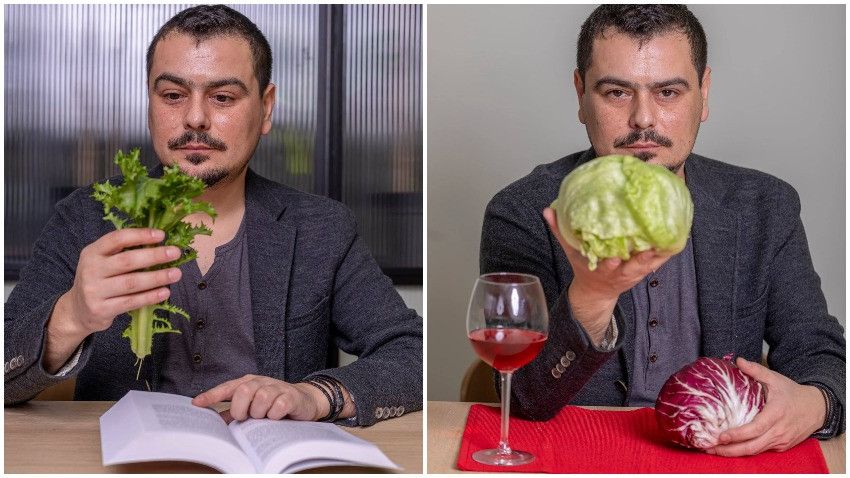Cosmin Dragomir is one of the few contemporaries dedicated to the history of gastronomy. From the Gastroart publishing house, where he published titles that became benchmarks for Romanian cuisine, to online groups, where specialized knowledge from various forgotten branches of gastronomy is spread, Dragomir has "a finger in each pie". Or rather, in every „sarma”, as you shall see in the interview below.
Gastronomy doesn’t not mean only food
And although along with gastronomy, he was also forced to learn wines (oh, what a nuisance!), even becoming a constant presence in in national wine competitions, as juror, this interview is less about wine and more about the forgotten or undiscovered gastronomic potential of the vine – leaves, tendrils, unripe sour grapes…
…
Wines of Romania (WoR)Let’s start simply – when and why did you get into gastronomy?
Cosmin Dragomir (C.D.): Hehehe… A long time ago, because of hunger mostly, as a poor student, I came to Bucharest… I had to manage myself, so I started playing a little with my pots and pans. Initially without any clue, without any basis, using what I had seen at my mother, using my intuition… The Internet those days was nothing like today, I didn’t even have cookbooks but, bit by bit, I got into it.
I think it was about ten years ago, around the time when Master Chef appeared in Romania, I noticed this trend was growing strongly abroad, that a lot of people are caught up in this phenomenon, how much interest there is in gastronomy, cooking – fine-dining or traditional, and it was apparent that there was a huge gap in this area (in Romania). That’s when it started, in fact, that’s how I got into gastronomy. I felt like I was missing a lot, I’m an „asphalt child”, I grew up in apartment buildings, in cities. I first participated in a traditional pig slaughter ten years ago, I was already 30 years old… As a child, all the children in the neighborhood went to the (before Christmas) pig slaughter, but for me it was something exotic.
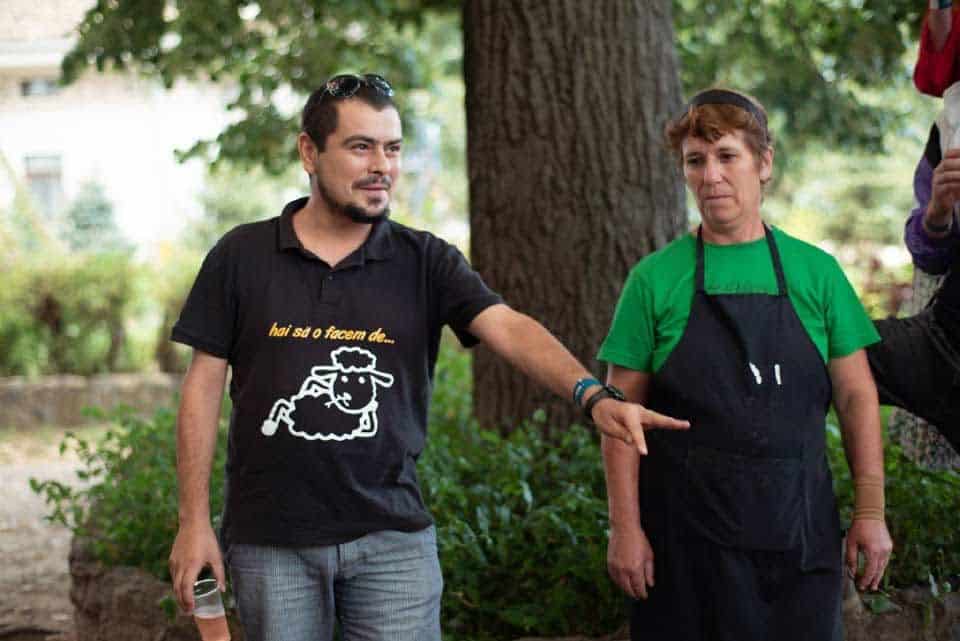
Discovering new tastes from not too old memories
WoRBut there were people who still kept a duck or a hen next to the block or in the bathroom…
C.D.: Not in my family. For me, going to the countryside meant going to my grandmother’s goddaughter’s house, my family paid for my holiday in countryside conditions. This meant eating dry bread soaked in water with sugar on it. And it was a delicacy! Fried polenta! I didn’t even know these things existed… There were just new tastes – maybe that’s where my appetite and predilection for traditional cuisine, which I’m just discovering, comes from. Others grew up with it, I discovered it, and when you discover it at 30, it has a different nimbus. It looks fabulous, straight out of a fairy tale. It is a gastronomy “ worth storytelling”.
WoR: You are involved in a lot online, and not only, in many discussions about the existence or non-existence of an authentic Romanian cuisine. When we talk about Romania, however, we are talking about a state that is a little over a century old. Does a cuisine typical of the "Carpathian-Danube-Black Sea area" exist?
C.D.: We have to take it piece by piece. Yes, when we speak about Romanian gastronomy, we speak about something close to a hundred and fifty years. The international cuisine spread long before the national states as we know them today. When we talk about Finnish cuisine or Ukrainian cuisine – they, as states, are more recent than us. If we talk about regionally specific cuisines, in general almost all of them have a subcontinental specific – if you go to the northern part, you have a cuisine with many similarities due to the climate. You have the same grains, the same fish, the same mushrooms…
WoR: …same flora, same spices…
C.D.: It makes sense. There is a theory in sociology that says that, under similar conditions, people cook similarly. We don’t have to go back with cooking to the Homo sapiens sapiens’[1] grandmother, who discovered frying, baking and so on.
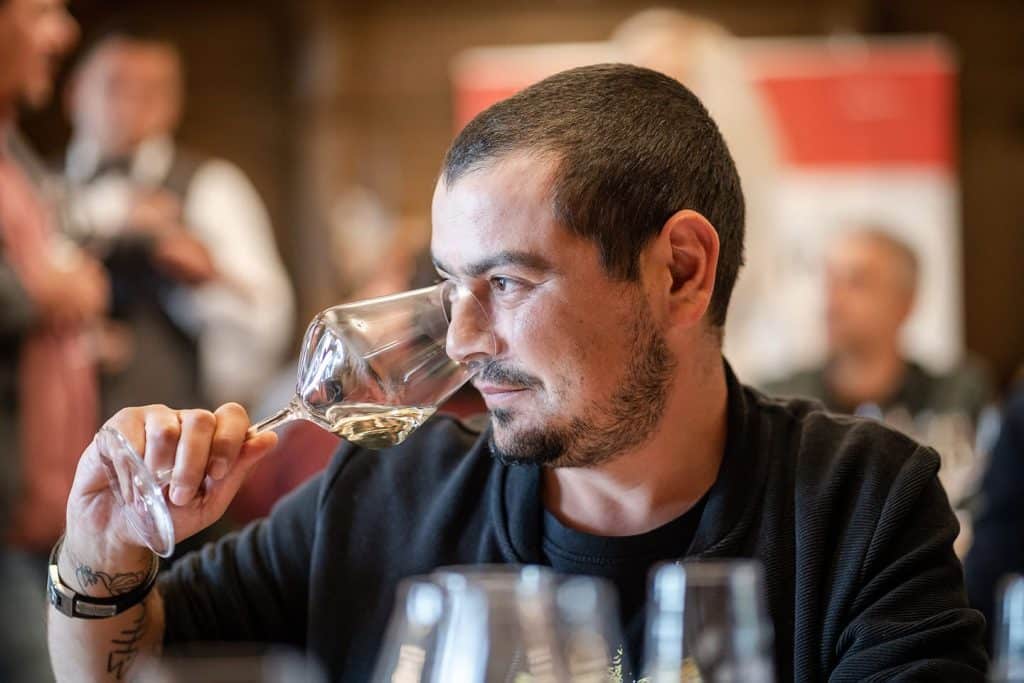
Is there a specific ingredient in Romanian cuisine?
WoR: In the end, all things are boiled, chilled, preserved, or eaten raw.
C.D.: In this view, the kitchen has not evolved much since we discovered fire. From there, people just adapted things. The fact that we, and the Hungarians, and the Mongolians, and the Patagonians also make a stew, which is a boiled down food – yes, it’s ok, but everyone does it in their own way. When we use a combination of ingredients, techniques and spices that differentiate us from what the neighbor is doing, the pot in which you cook also matters…
WoR: Yes, like the case with the goulash, which was the shepherd’s food, made by the side of the road, in a cauldron. Here, you made it at home, on the stove, in a pot… It’s not the same taste.
C.D.: Yes, and we didn’t use paprika, because we didn’t have any. You used leeks and rosemary. Or lovage. Look, lovage is an ingredient that differentiates Romanian gastronomy from many other cuisines. It was a lot more widespread. Some time ago, I don’t know why, maybe people didn’t like the taste, it was no longer used, and now we only use it in Eastern Europe. Especially us, in Romania. There is no borscht without lovage. It is an identification element.
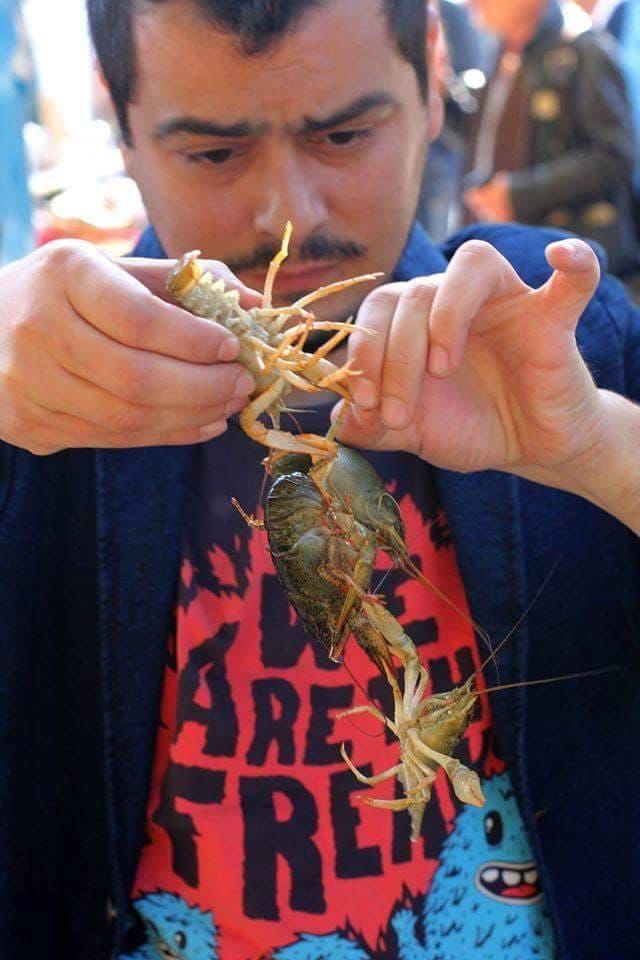
How is documentary research for a gastronomy lover?
WoR: You are caught up in many projects. Books, publishing, a plethora of social media groups, about fish, organs and more. What area still excites you the most? I’d like to say "sarmale", but I won’t say it myself…
C.D.: All of them, taking turns. I started each of them with the same unweighted enthusiasm because when I fall in love with an idea, I like to give it my all. I just stand there, seduced, and try to do as much as possible. Maybe I lack steadiness. Gastroart, the publishing house – or rather the history of gastronomy – this is where I think I was really settled. But let’s not forget: I don’t have nor use the academic research method. I am just a journalist who puts together some information, based on past and present readings.
WoR": How do you get to the primary sources of gastronomy, because there aren’t that many sources available…
C.D.: Our bibliography is terribly poor, almost non-existent. You have to tap into other areas, from fiction and memoirs or travel journals to history and archaeology. I was also lucky to have a good memory, and I remembered information from here and there, and at some point I realized that three pieces of information from different sources could make the subject of an article. And I was writing it, with the idea that it can be developed later. I wrote a rather complex article about mici and mititei – I use the expressions as differential, because mititei are the uncooked ones and mici are the cooked ones. I don’t know why, ask the people who made the food industry textbooks. Not the DEX, because in DEX they are synonymous, but in the specialized literature. Maybe because they shrink when you grill them, I don’t know. The thing is, now I’ve found some new recipes…
WoR: It depends… If you put baking soda in the minced meat, they grow when you cook them, depending on the quantity
C.D.: That’s what the literature says, it can contradict both the academy and the DEX. But I’m not a slave to DEX either.
Dessert has its place, no matter how full you are
WoR: You probably already have a new book on the shelves by the time we publish this article.
C.D.: Yes, it’s in proofreading now, which is not necessarily easy. It is about "Sweet Romania. A history of our desserts". A history of various sweets, desserts, traditional and not necessarily traditional, from ancient times to the present.
WoR: Since ancient times meaning since we extract sugar from beets, since we started to write or from Dacian honey?
C.D.: I also cover some of Dacia. I’m not a psycho-Dacian fan, I rely exclusively on the available ingredients. It is an undocumented period, there are no writings, no documents, no evidence, we can only speculate here and there, but not much. For example, we have cookbooks, such as that of Apicius [2], from the first century, which would overlap chronologically with the Roman conquest, but we cannot necessarily assume that those recipes were those practiced by the invading armies. Instead, to say that a cereal porridge was sweetened with honey – that’s as plausible as it gets, it’s common sense. Otherwise, we satisfied our sweet tooth with fruits, mostly. Evidence documents appear only after 1500, but they contain some exceptional revelations. Despite the lack of documents and evidence, the history of gastronomy is much more complex and surprising.
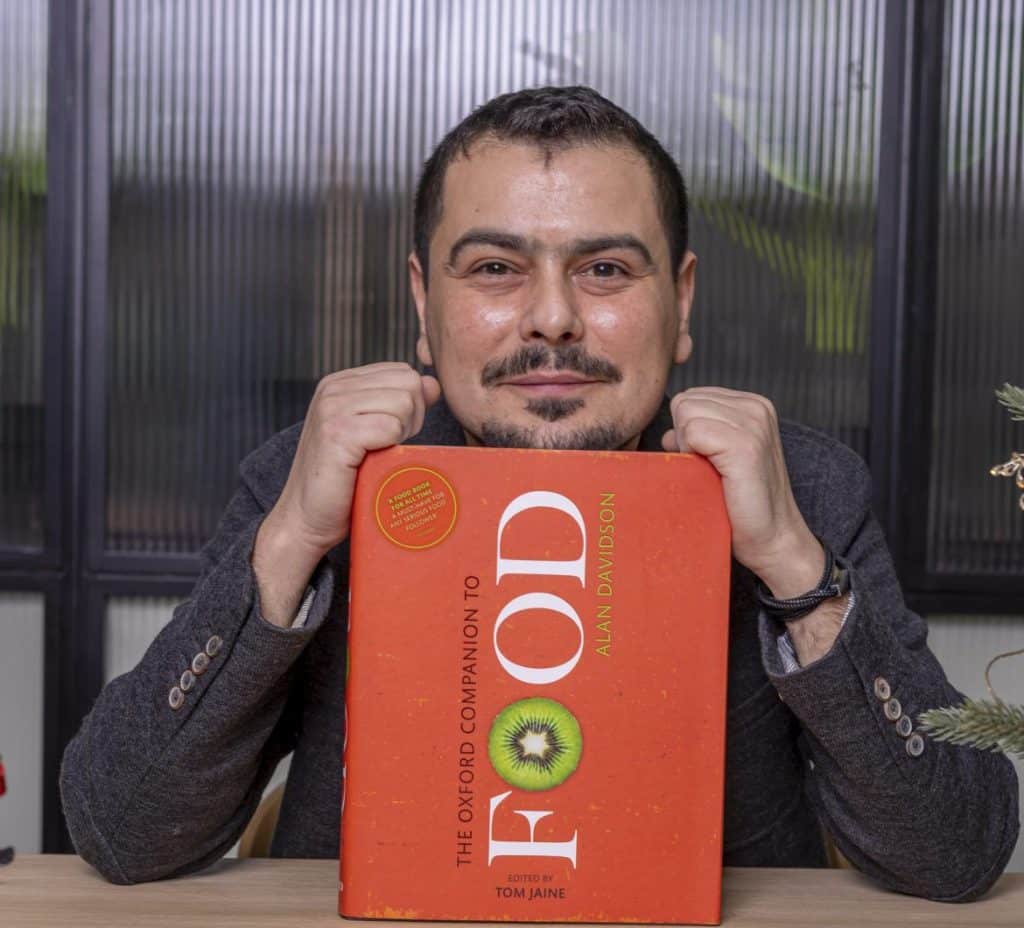
Genuine cuisine, between reality and normality
WoR: In such a long period, dozens of tribes passed through here, some even settled here, it should be the genesis period of a gastronomy that was enriched by all these influences.
C.D.: Some see the multitude of influences as a handicap, I see a huge advantage. There are very few places where you can discover a melange between so many influences. We are also talking about modern migrations from one area to another…
WoR: By the way, I ate a good storceag for the first time in my life in Brasov…
C.D.: Yes, and it is not mandatory that “a la Cluj” cabbage be made in Cluj. But I would like to find in at least 30% of the traditional restaurants in Cluj an “a la Cluj” cabbage. Which is not happening. as I would like to find Ana Lugojana (layered) pancakes in Banat. But Cluj cabbage is made in layers, it is a cabbage lasagna. What we find now is closer to another recipe I discovered, in a rough translation, because it is from Russian, a cabbage soup a la Cluj, it is made the same way, only with more juice. As we make sarmale soup, this is Cluj’s cabbage soup. On the other hand, in other parts, the Cluj cabbage is called "the lazy man’s sarmale". I found another recipe, which is not similar, and even contradicts the recipe as we know it – the rice is pre-boiled, the onion – sauteed, the cabbage – pickled or sweet – it is cut into strips, put everything together with the meat and then fried as meatballs. These are some meatballs that taste like sarmale, except that they have cabbage and rice inside. And here we come to sarmale… Sarmale are made everywhere, almost everywhere in the world, and in unexpected forms.
A "sarmale"-zed wonderful world
WoR: We have a mutual friend, who periodically makes “sarmale nests”, and we envy and drool whenever they post pictures on social media. from sarmale with smoked duck breast to sarmale with 100% sheep. What would be the national sarmale, if any?
C.D.: Unfortunately, the Bucovina nest – because for now it is set as a Bucovina sarmale nest, as described by Radu Anton Roman – stays only in Bucovina and is an exception. And we don’t find it in guesthouses and restaurants in that region either.
WoR: Because it’s too complicated to make five different pots of sarmale?
C.D.: They are not different pots. We are talking about wrapping five different sarmals, possibly – but it is not necessary – in different leaves, but necessarily five different fillings, rolled separately, but then wrapped in a covering cabbage leaf. that is, a large sarma, in which you find five smaller ones, each with its own taste.
WoR: Like a tasting menu, basically…
C.D.: Something like that. An university professor from Helsinki, in 2012, at Oxford, holding a conference about fillings, about wrapped food, said about this nest that "it takes the expression of a slave in the kitchen to a completely different level". We have from cabbage stuffed with sarmale to pumpkin stuffed with sarmale. There are hundreds, thousands of variations on a theme.
There are over 200 different sarmale recipes in Romania alone. The fact that we change the leaf changes its taste, the fact that we change a spice also changes its taste. It’s not a major difference, but if you use sheep meat, or duck, if you use rice or not, everything changes. There are communities where rice is replaced by grated potatoes. We have fasting sarmale, which can have anything from plain rice to rice with mushrooms, with raisins – this is really on the Romanian recipe – to curd with raisins or ground pumpkin seeds.
The leaves can be sage, lovage, horseradish, up to linden and quince leaves. And we return to the classic ones, made from sweet cabbage / pickled cabbage or grapevine leaves.
WoR: Are you also writing a book about sarmale?
C.D.: Yes, I don’t know when I’ll start writing it, because I’ve been documenting it for some time. I’d probably need a sabbatical, a few thousand euros – I still need some research in native languages translated, from China to Russia, from India to all the Persian basin, where sarmale are found. What I can find in English or with Google Translate is insufficient. If I found 200 recipes in Romania, you can imagine what exists in Georgia, Azerbaijan, Turkey and Iran, India and China. And the book is not only about sarmale or recipes, it is also about stories, superstitions, sayings, proverbs, etymological intrigues… The recipes matter less, I will review the recipes, I will not give firm used amounts, I will discuss different techniques, I’m going to say that some people use goji, others use bugs… I went too far.
WoR: What is a sarma anyway? Any mixture folded into a leaf? Does the leaf have to be edible? Can we make the meat or mixture into an inedible palm leaf, is that still a sarma?
C.D.: We make sticky rice in palm leaves, and it’s not sarma, we make tamales and it’s not sarma, and stuffed bell peppers aren’t sarma either. It must be a mince or grind, wrapped in a leaf, cooked together and eaten together. The leaf is not just a support and we do not hollow out fruit or vegetables to fill them with the mixture. If I wasn’t eliminated by that criteria, I’d probably never be able to finish.
Grapevine doesn’t mean only "grapes and wine"
WoR: Since the advent of modern farming, the season for vine leaves is narrowing. You don’t want to pick them freshly treated, sprayed with insecticides or pesticides… Are you waiting for the harvest and the rains after?
C.D.: I’m not good at pruning, but I know you have to take the leaves while they’re tender. I know the leaves have their clear purpose there, to protect the grapes from excessive sun, so we clearly don’t cut those leaves, so they don’t affect the wine. But, after all, what doesn’t man do for sarmale… Or for wine!?
WoR: We have been living in the company of grapevine for millennia. Do the vine leaves have another use other than wrapping the sarmals?
C.D.: Before I answer you, I want to underline something. The oldest documented recipe for sarmale comes from Armenia, approximately from 784 B.C., in cuneiform writing – rice, fowl meat or chicken, mushrooms, a special cheese of theirs, the one woven into strips, all wrapped in a grapevine leaf – Armenia has the oldest history of wine, at least from what is proven archaeologically – and baked together.
I think that, more than the vine leaf, we forget about agurida, the unripe sour grapes. I see less and less sour soups made with agurida… I would like the new generation to still have the strength to understand how beautiful a vine tendril is, so sour and crispy. Everytime I get to visit a winery, I go through the vineyards, I rip a tendril and gnaw it.
About the leaves – they are just a support or cover, but if I think about brined grapevine leaves, I don’t see why we couldn’t think of a salad, like seaweed salads. We just have to get out of our comfort zone and rethink the story.
I remember Iosif Strassman’s [3] recipe, he calls them Mexican sarmale: place the vine leaves exactly like a sheet of nori seaweed, then a layer of polenta, the mixture of sarmale pre-fried in the pan, then roll them exactly like sushi, but it’s sarmale. So we can think differently. Deconstructed and rebuilt, piece by piece
Nico Lontras [4] made some excellent, memorable sarmale, only adding a goulash sauce. Let’s try new things, let’s see how they are. We would never put mayonnaise or tzatziki sarmale. The Argentinians put parmesan in it and there’s nothing wrong with that… I have a problem with the Finns, who use birch syrup. Croats from the Banat mountains do not eat polenta with sarmale, but potatoes, mashed potatoes flavored with a certain pork or beef fat and, possibly, smoked meat.
(After you read such an interview, you either escape in the fridge, or you pick up the phone and make a reservation to the restaurant, or you call and ask your mom what she has cooked for today… It doesn’t matter what decision you’ll make, you have no chance to remain indifferent!)
Sources:
[1] https://www.britannica.com/topic/Homo-sapiens-sapiens
[2] https://en.wikipedia.org/wiki/Marcus_Gavius_Apicius
[3] https://www.dulceromanie.ro/cofetari-si-cofetarii/povestea-incredibila-a-lui-iosif-strassman
[4] https://www.restocracy.ro/chef-nico-lontras/
[5] Cosmin Dragomir personal archive

